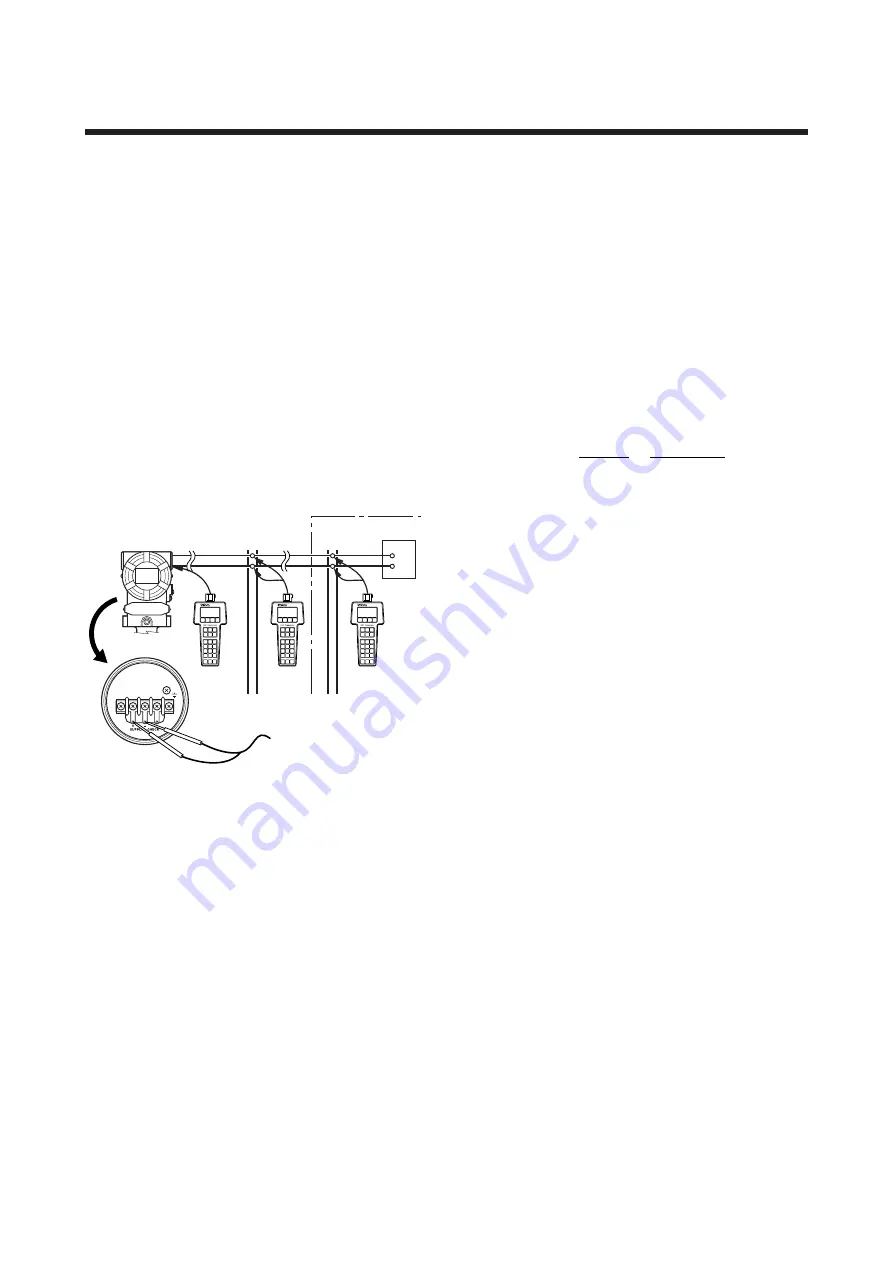
IM 01C22T01-01E
2-1
2. HART COMMUNICATOR OPERATION
2.
HART COMMUNICATOR OPERATION
2.1 Conditions of Communica-
tion Line
2.1.1 Interconnection Between DPharp
and HART Communicator
The HART Communicator can interface with the
transmitter from the control room, the transmitter site,
or any other wiring termination point in the loop,
provided there is a minimum of 250
Ω
between the
connection and the power supply. To communicate, it
must be connected in parallel with the transmitter; the
connections are non-polarized. Figure 2.1.1 illustrates
the wiring connections for direct interface at the
transmitter site for the DPharp. The HART Communi-
cator can be used for remote access from any terminal
strip as well.
DPharp
HART communicator
Relaying
terminals
Distributor
Control room
Terminal
board
F0201.EPS
HART
communicator
Figure 2.1.1 Interconnection Diagram
2.1.2 Communication Line Requirements
Specifications for Communication Line:
Supply voltage(general use type); 16.4 to 42 V DC
Load resistance; 250 to 600 W (Including cable
resistance)
Minimum cable size; 24 AWG, (0.51 mm diameter)
Cable type; Single pair shielded or multiple pair with
overall shield
Maximum twisted-pair length; 10,000 ft (3,048 m)
Maximum multiple twisted-pair length; 5,000 ft
(1,524 m)
Use the following formula to determine cable length
for a specific application;
L =
–
65
×
10
6
(R
×
C)
(C
f
+10,000)
C
Where: L = length in feet or meters.
R = resistance in ohms, current sense
resistance plus barrier resistance.
C = cable capacitance in pF/ft, or pF/m.
C
f
= Maximum shunt capacitance of field
devices in pF.









































